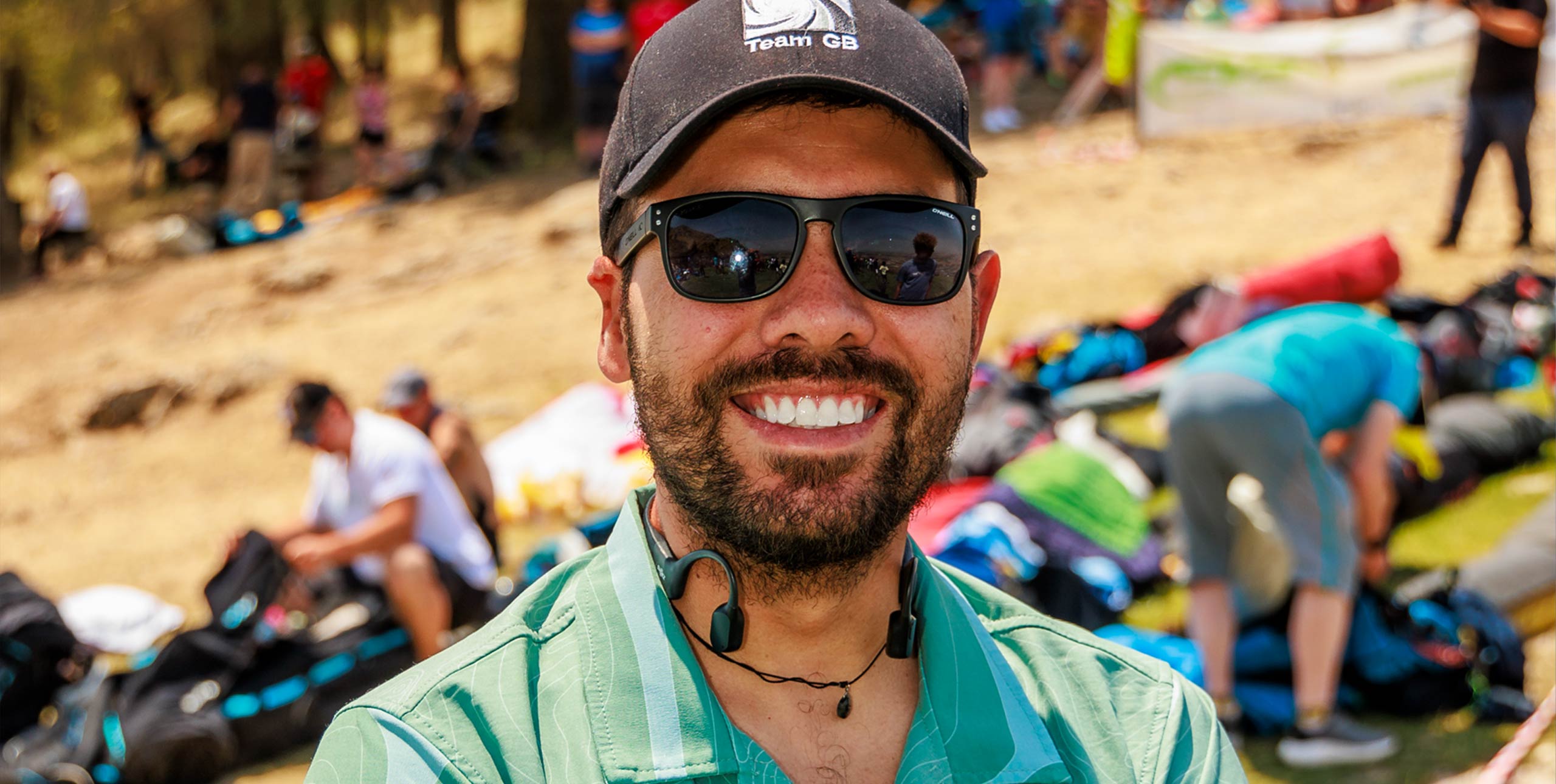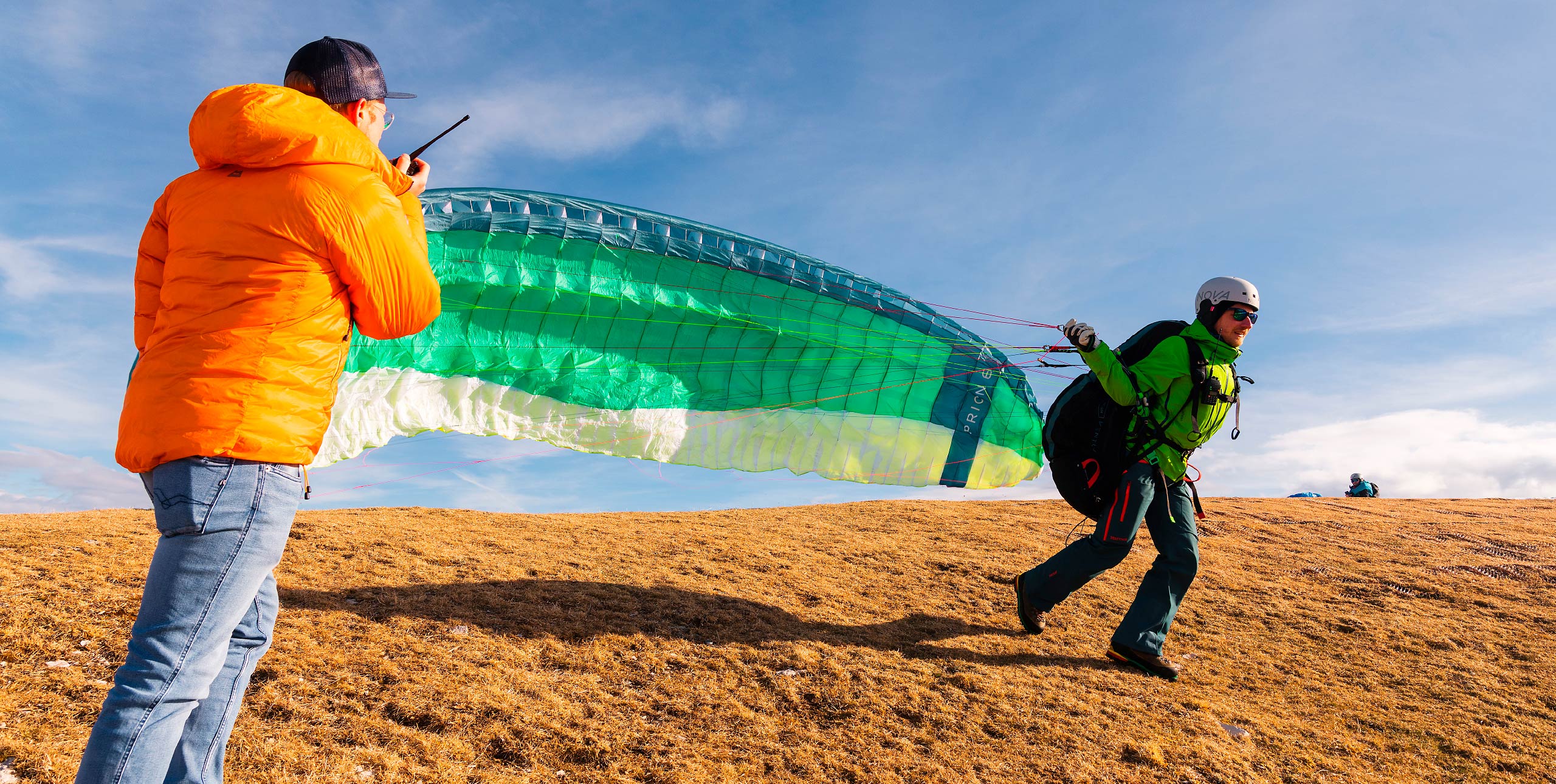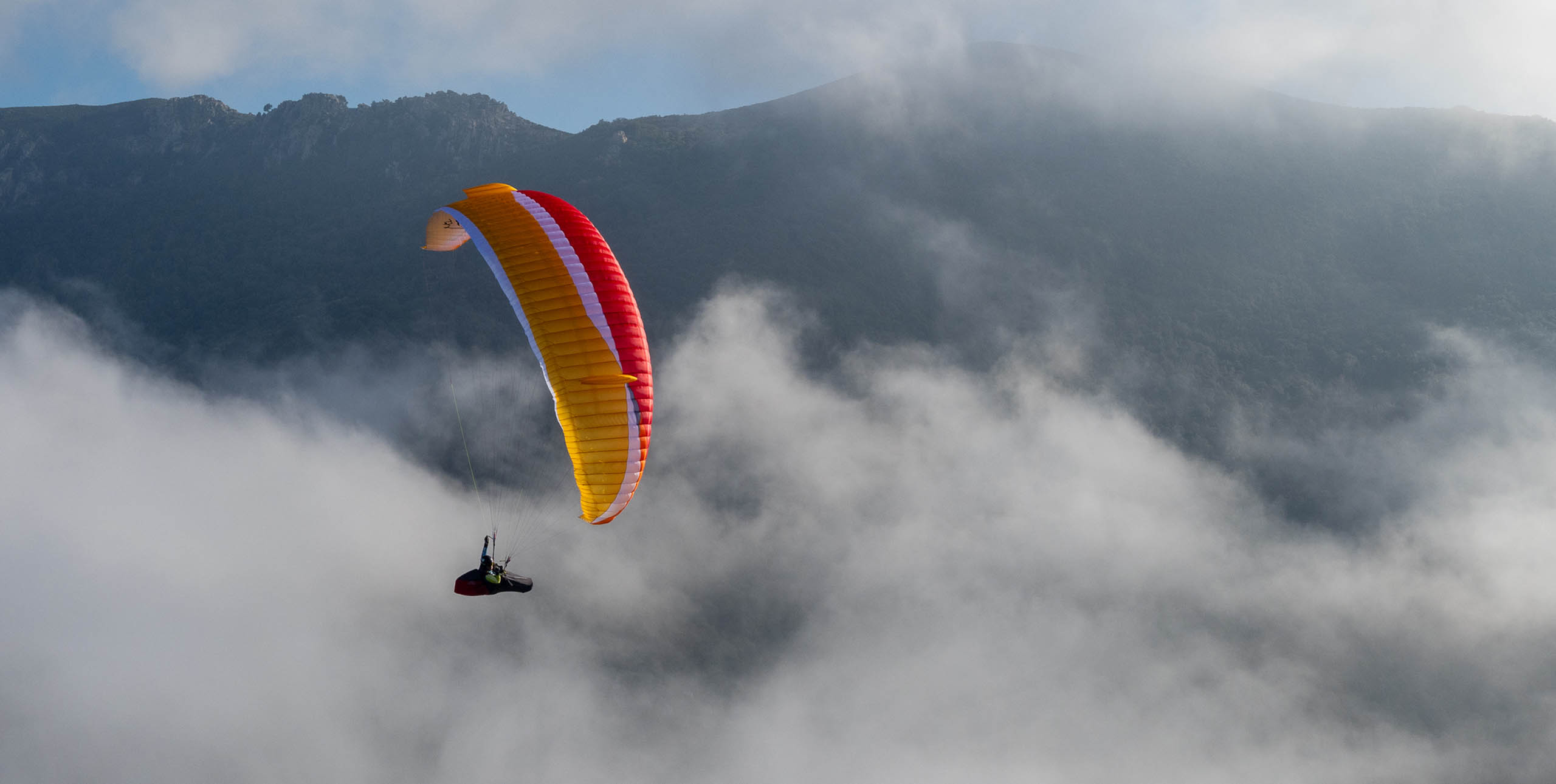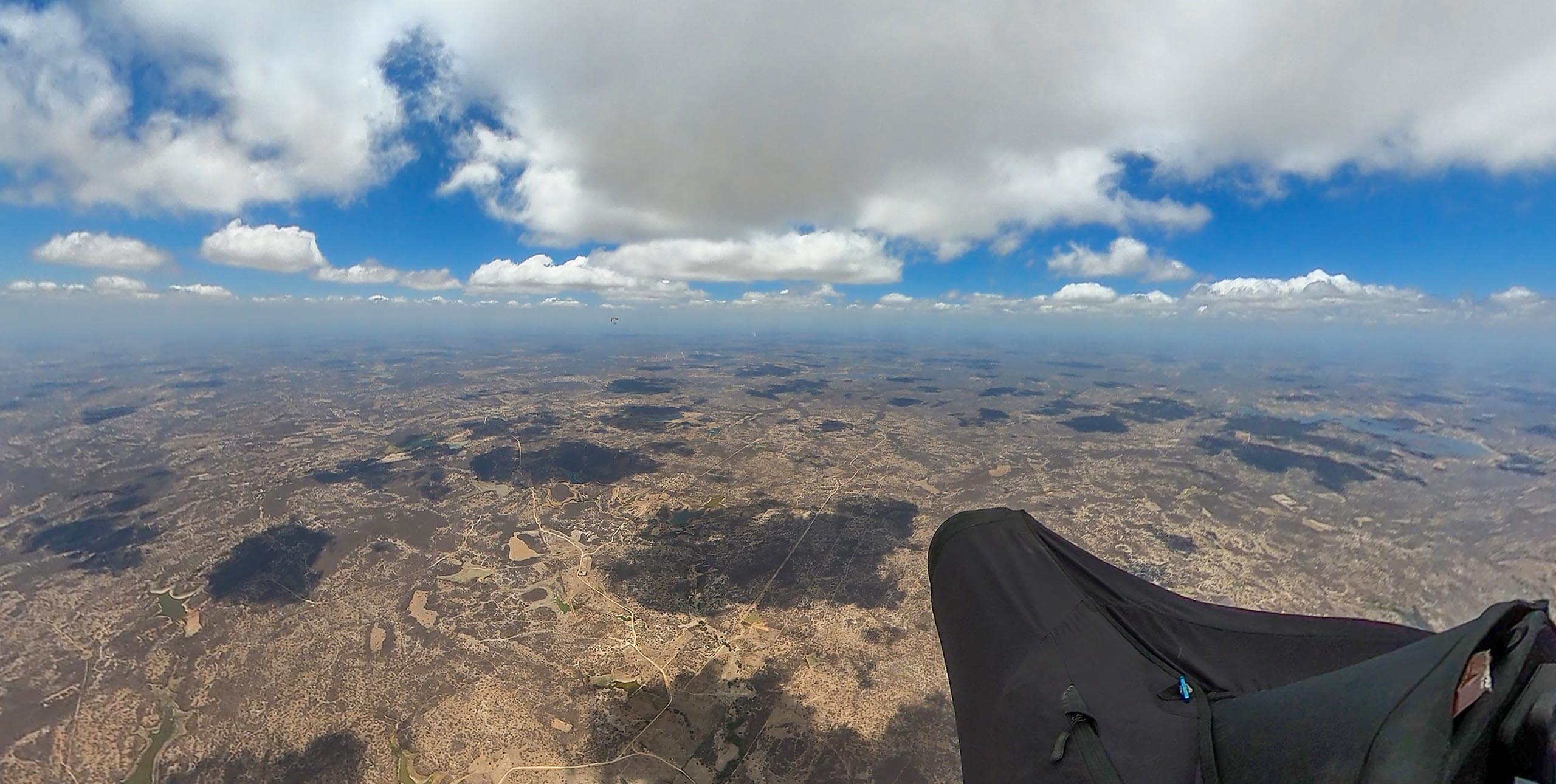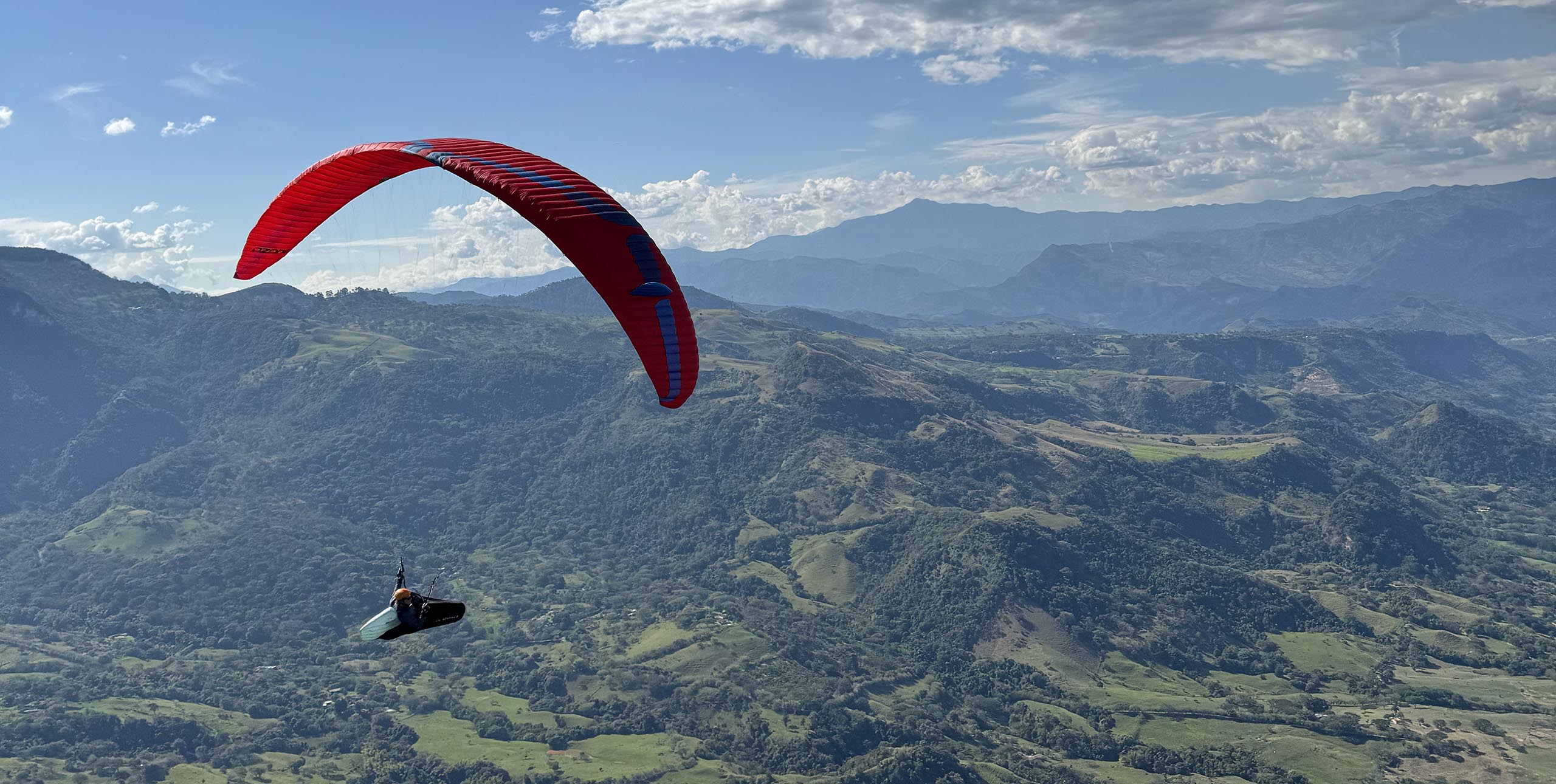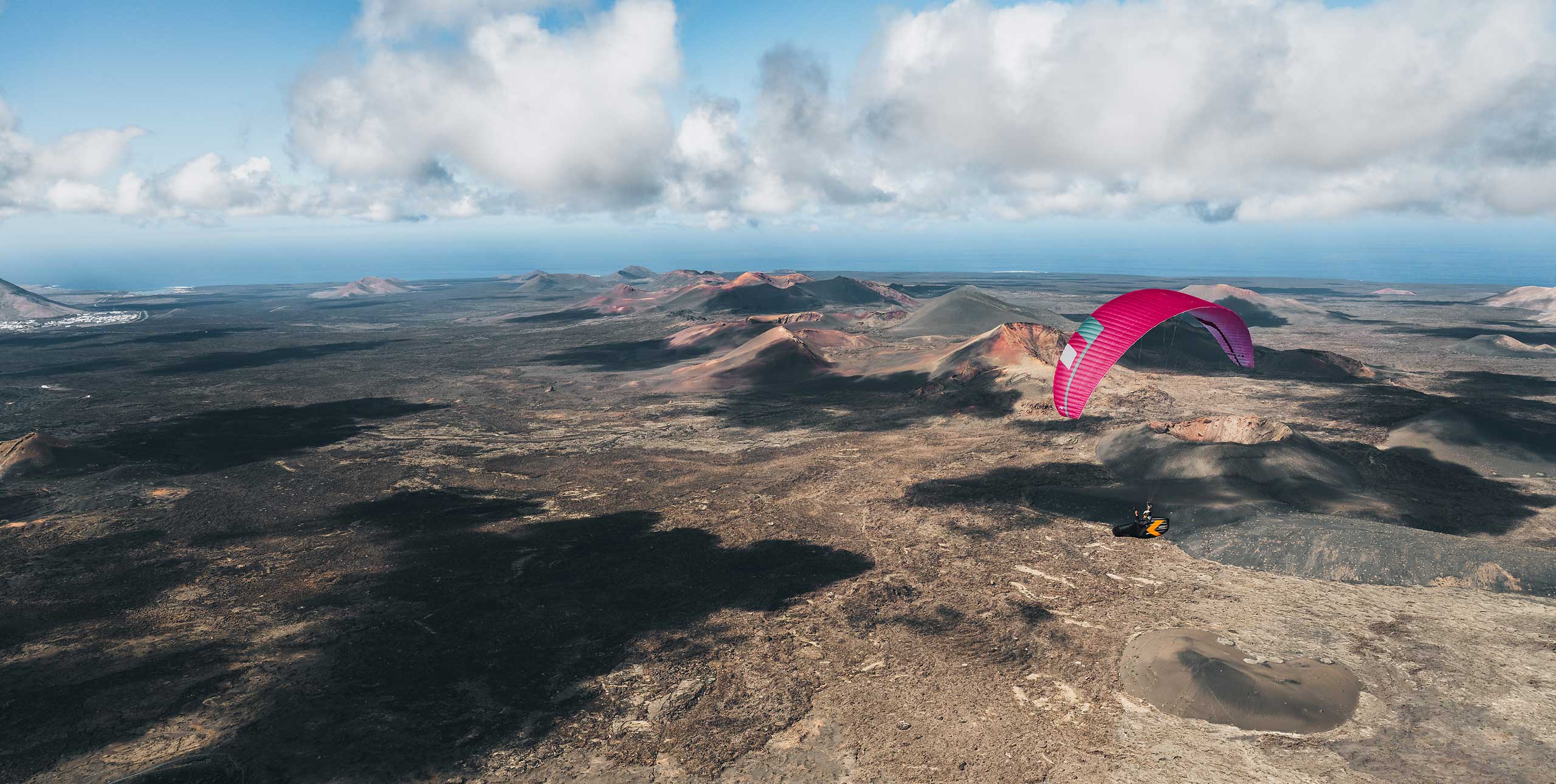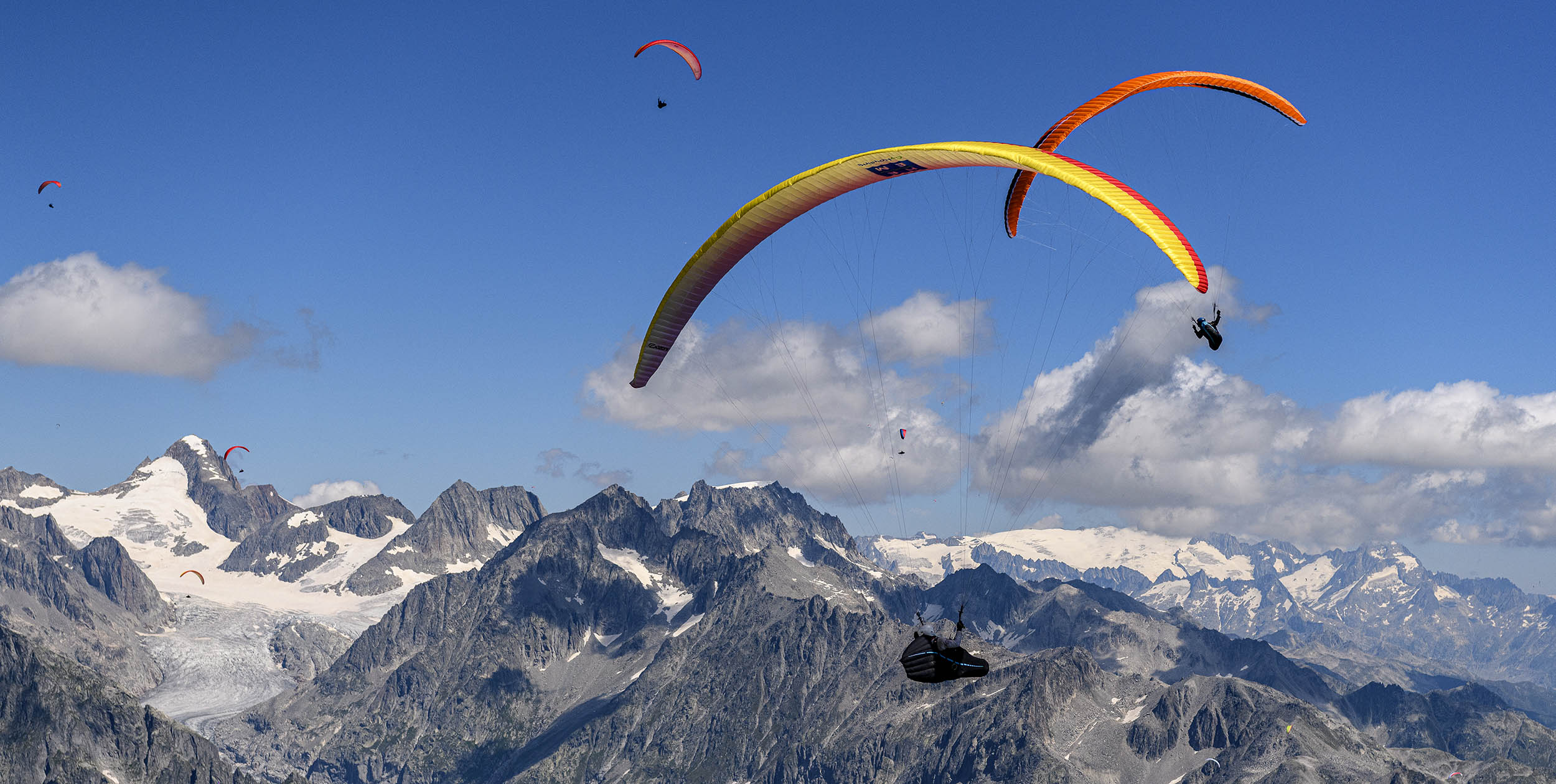
To maximise our overall XC speed we need to learn how to maximise climbing speed as well, writes Mads Syndergaard.
The first supremely important rule of superior thermalling is: Never be content! Far too many pilots stubbornly cling to their own thermal, even if someone is climbing far better close by – don’t fall into this trap!
The trick is to find the balance between zipping about the skies like a headless chicken and not improving gross climbing rate, and moving around just enough to make sure you are always in the best lift available.
Your fellow pilots are your friends in this game, as they are all, voluntarily or not, busy showing you what a huge sample of the sky is doing at any moment. You need to develop eyes in the back of your head in order to keep monitoring everyone around you – even those outside of immediate collision avoidance reach.
This is hard to do in the beginning as you are likely to be somewhat freaked by the dense traffic around you. But as you become more comfortable with the traffic you should begin to watch pilots not just to avoid them, but so you are ready to change your radius as soon as someone somewhere is climbing better.
My personal trick is to be very aware of not just pilots, but actual people I know in the air around me. In a competition I try to learn who is on which wing, and combine this with my knowledge of who I need to watch the closest.
I find it far easier to keep track of a gaggle if I can attach names to all, or most, of the pilots flying around me. That way I won’t just notice a Niviuk suddenly climbing better over there, I will notice that Aljaz is climbing better over there. Try it, it does make a difference!
SWITCH OFF AND SKY OUT
When you are alone in the skies, or there are no pilots in your immediate vicinity, you still need to maximise climb rates just as much as when you are in a great gaggle. It could be that you are leading the task, and thus need every advantage to keep the baying hounds at arm’s length.
In order to hone climbing skills when no visual clues are available I have found it valuable to use two little tricks. First, when free-flying experiment with shutting off the vario and flying on feel alone. It works wonders for your sensory perception of air mass movements.
Second, again when free flying, try to close your eyes for extended periods in thermals and concentrate on combining the sound of the vario and the sensations coming at you from the seat, the wind noise, the brakes, the risers etc. (Obviously don’t do this with other pilots around or there is a chance you could hit something – do this high.)
[promobox]
USE YOUR INSTRUMENTS
Modern instruments make doing searching patterns in the thermal easier than it used to be, as they help you in case you inadvertently drop out the side of a thermal. With the thermal-mapping function active on your instrument all you need to do when that happens is to steer back into the good lift and you are going up again.
If there is significant wind it is important to remember that the core tends to get shifted to the windward side of the thermal. That means you should make your 360s a little longer on the upwind leg each time so you are sure to always search for stronger lift near the windward edge of the thermal.
Should you drop out the windward side that is not so tragic, as it is far faster to return into the lift from the windward side than from the leeward side.
DOING IT IN THE GAGGLE
In competition or big gaggles you will find that it is often not possible to optimise thermalling as much as you would like, simply because there are too many other pilots sharing the thermal with you. This is especially true on light days where every metre counts and pilots become reluctant to push ahead to find better lift.
However, even heavily congested thermals will often have embedded bubbles of better lift coming through, and your mission is to ensure that these do not escape without your milking them for all they are worth.
The trick is to remain ultra-alert at all times, and cut inside the wider arc of the gaggle every time a bubble comes through where you are, trying to stay in the stronger lift for as long as possible.
Be aware that this is somewhat controversial advice as many pilots are very wary of others trying to cut inside them in thermals. But if you keep alert at all times, and don’t cut it too tight you should be fine so long as you approach this tactic gradually – no one likes a rookie who is too aggressive in the thermals!
In saying that, you can get away with much by being really considerate in the thermal when you merge with others, whether from within (as it happens when you have cut inside the gaggle) or from without, when joining the gaggle from gliding.
Extracted from Flying Rags for Glory, by Mads Syndergaard


